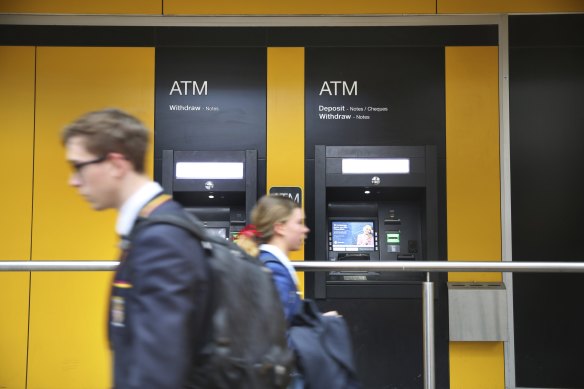This was published 2 years ago
CBA launches new verification measures as scam complaints surge
By Millie Muroi
The Commonwealth Bank of Australia is launching new verification measures for money transfers and phone banking, after a predicted $2 billion surge in scams gave rise to calls late last year for banks to take more responsibility.
On Thursday, Australia’s largest bank announced two app-based initiatives, after a push by the Australian Competition and Consumer Commission in July for banks to implement an initiative similar to the UK’s “confirmation of payee” scheme to reduce the volume of bank transfer scams.

Commonwealth Bank said its machine-learning based technology had a 93 per cent hit rate in flagging scams.Credit: James Alcock
About $227 million was lost to these schemes, also known as payment redirection scams, in 2020, according to the regulator. They were the most damaging to businesses and the second most financially damaging type of scam overall in 2021.
Online banking transactions require the recipient’s name, BSB and account number, but most banks check only the BSB and account number. In 2017, banks in the Netherlands introduced a name check service which reduced reported fraud by 81 per cent.
In March, CBA will follow the Netherlands’ lead, launching NameCheck, a machine-learning based technology.
CBA’s retail banking group executive, Angus Sullivan, said the technology indicates whether account details entered by customers to make a first-time payment match those in the bank’s database.
“When they transfer money online, many people assume the intended recipient’s account name is checked as well as the BSB and account number, but in most cases this is not possible,” he said. “We now have the data and technology to improve this.”
James Roberts, CBA general manager, group fraud, said that when the machine learning algorithm for NameCheck was back-tested against known business email compromise events, it had a 93 per cent hit rate.
While Pay ID – which works by linking someone’s bank account to easy-to-remember information such as a mobile number or email address – and PayTo are payment methods that Sullivan said can reduce the risk of scams, he said their take-up remained relatively low, lifting the need for measures such as NameCheck.
“I think it’s going to be a while before we see those two methods at really mass-scale across the industry,” he said. “BSB and account numbers will stick around for a while, and we want to make sure that we can keep our customers safe.”
‘We see every day, in our work with consumers and banks, the devastating impact scams can have on people.’
David Locke, Australian Financial Complaints Authority chief
CBA’s second initiative, called CallerCheck, allows staff to trigger a notification to a customer’s app to confirm a call being made by the bank. Customers can also verify their identify within the app, reducing the need to share personal information over the phone.
Sullivan said until now there had been “no easy way for a customer to verify if they were genuinely speaking to the bank”.
The new measures come amid fears that scams could cost the country $4 billion this year, up from an estimated $2 billion in 2022, following mass data breaches at Medibank Private and Optus.
The Australian Financial Complaints Authority welcomed the announcement, citing the increase in the number of scam-related complaints it received.
In the 2021 to 2022 period, the ombudsman service received an average of 340 complaints in relation to scams every month, up 28 per cent on the previous year. In the current financial year, that figure surged to an average of 400 scam-related complaints a month.
The authority’s chief executive, David Locke, said both the volume and sums involved in scams were increasing, with some losing home deposits and retirement savings.
“We see every day, in our work with consumers and banks, the devastating impact scams can have on people,” he said. “We welcome any initiatives by banks to seek to protect their customers, including the innovative use of technology.”
The Business Briefing newsletter delivers major stories, exclusive coverage and expert opinion. Sign up to get it every weekday morning.